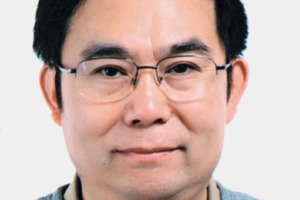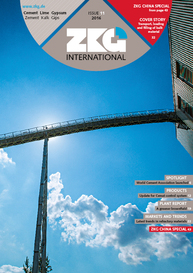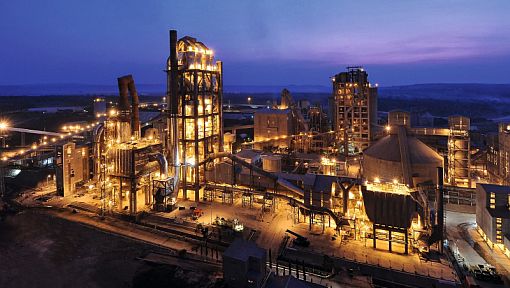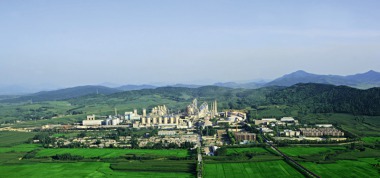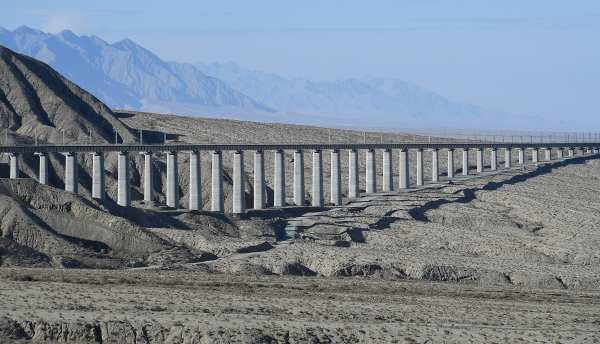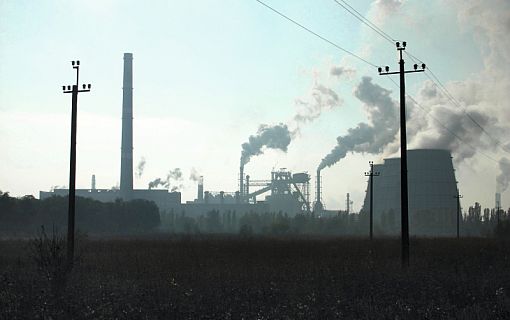The Chinese cement industry
The Chinese cement industry, currently in its 127th year, has a 60 % share of global cement production. Since the 1980s China has transformed itself technologically from a technology and equipment importer to the largest supplier of complete cement equipment in the last decade and now takes nearly 50 % of the world market. Cement technology means that nearly 100 % of the kilns used for production are NSP kilns, but availability in 2015 did not reach 70 % because of severe overcapacity. The cement output in 2015 was 2.3 billion t. This was a 5 % decrease when compared with the previous year and was the first decrease during recent decades, while the capacity is still more than 3.5 billion t. China is now in the middle and late period of industrialization and urbanization. Starting from last year the cement demand will enter a long period of downward trend for the next 20 years, extending to 2035. The main task of the Chinese cement industry over next 20 years is to reduce quantity, but increase quality and efficiency. About 100 million t of overcapacity will be removed from the market every year for the next 20 years, taking the capacity from 3.5 billion t in 2015 to 1.5 billion t or even less around 2035. Forecasts indicate that China’s maximum population will be around 1.5 billion in 2035 when the consumption of cement per capita will be around 600 kg, similar to the current level in some developed countries. Cement demand will become stable or even decrease during the period from 2035 to 2050, with zero growth of population in China during that time.
The elimination of cement and clinker overcapacity in the next 20 years means that the cement industry in China will experience a large reduction in energy and CO2 emissions, including the reduction caused by advances in quality and efficiency. The average clinker heat consumption in 2015 was close to 110 kg standard coal/t clinker (770 kcal/kg) while the best result was 560 kcal/kg. The overall power consumption for cement was about 90 kWh/t cement while the best figure recorded was 68 kWh/t cement. The clinker factor has reached 0.6, and has remained stable during recent years.
Over the next 20 years the Chinese cement industry will change its development model from increasing the output to upgrading the quality and efficiency, and the industry will also be integrated into fewer corporations. The more than 1200 cement plants and 3000 cement enterprises (including some 2000 cement grinding plants) with 1600 rotary kilns in 2015 will be reduced to some 500 cement plants with 600 rotary kilns belonging to around 100 companies in 2035. The situation will remain stable up to 2050.
The automation and self-learning processes represent another trend for the cement industry in China. More and more production lines are employing fewer than 100 workers as standard and there will be even fewer in the future. At present a typical cement production line of 4000 t/d in China has 300 employees and in the 1980 s the figure was 3000 employees.
The historic shift in strategy of the Chinese cement industry from increasing the output to upgrading the quality and efficiency that started in 2016 means that the lifespan of buildings in China will also increase from an average of 30 years to 100 years, and the demand for cement capacity is likely to be reduced by more than 2/3 of the total from 3.5 billion to about 1.0 billion. However, the industry would have the same functionality or better due to the gains in quality and efficiency through the advances in technology.
Prof. Cui YuanshengSecretary General of the Engineering Technology Council, Chinese Ceramic Society (CCS); Chief Expert of the Institute of Technical Information for Building Materials Industry of China (ITIBMIC)

